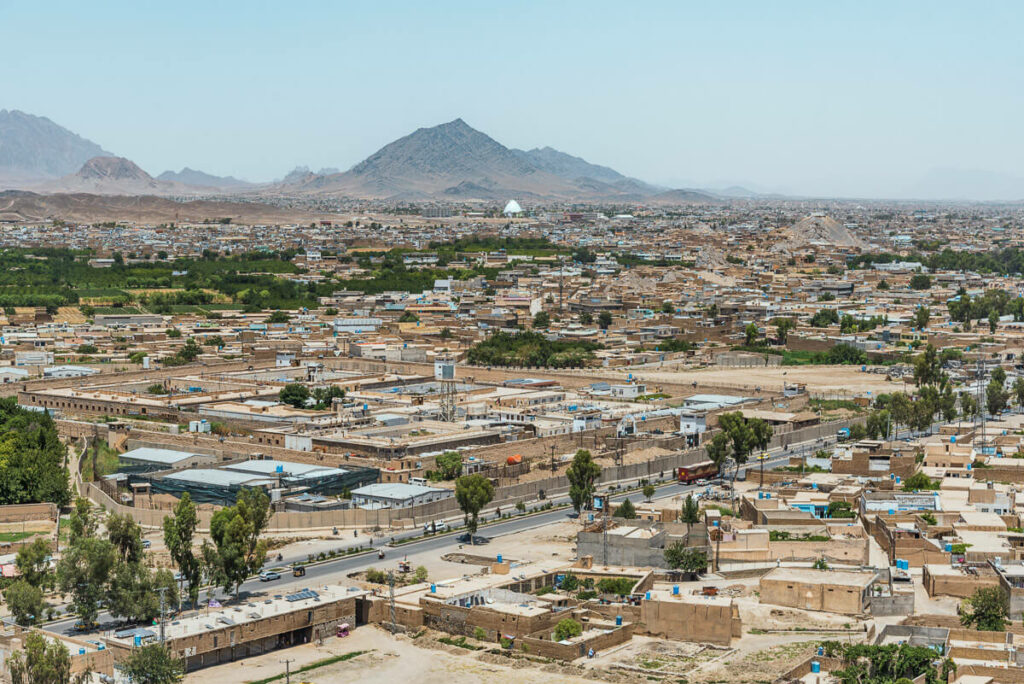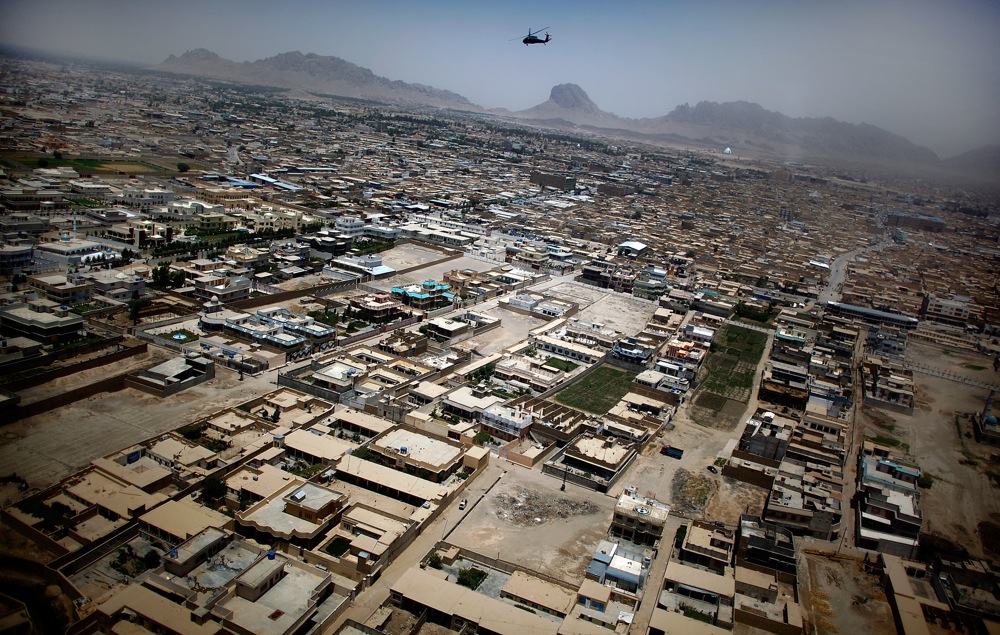Kandahar, often referred to as the “cradle of Afghan culture,” is a city that holds a prominent place in the tapestry of Afghanistan’s rich history. Located in the southern region of the country, Kandahar is not only one of Afghanistan’s oldest cities but also one of its most strategically significant. Its historical legacy, cultural richness, and economic contributions have made it a focal point in the region for centuries.
A Historical Overview
Kandahar’s history dates back thousands of years, with its origins rooted in the ancient city of Candahar, which was founded by Alexander the Great in 330 BC. The city’s strategic location along the historic Silk Road made it a vital trade hub, connecting various civilizations and fostering cultural exchange between the East and the West.
Throughout its history, Kandahar has experienced numerous conquests and changes in rule. Following Alexander’s reign, the city saw the rise of the Mauryan Empire and later became part of the Islamic Caliphate in the 7th century. During the ensuing centuries, it was ruled by various dynasties, including the Saffarids, Ghaznavids, and Ghurids.
The city gained significant prominence during the time of Shah Shuja in the early 19th century and became the capital of Afghanistan. However, it also became a battleground during the First Anglo-Afghan War(1839-1842) and the Second Anglo-Afghan War (1878-1880), which showcased its strategic military importance and the place of Kandahar in the broader political landscape.
Cultural Heritage
It is rich in cultural heritage, demonstrating a blend of various traditions, languages, and ethnicities. The city is predominantly inhabited by Pashtuns, who have a strong influence on the cultural landscape of the region. Pashto is the primary language spoken in Kandahar, with Dari also widely used.
More:Read about on Mazar-i-Sharif: The Spiritual Heart of Afghanistan
The culture of Kandahar is characterized by its vibrant traditions, folk music, and artisanal crafts. Local artisans are renowned for their skills in producing intricate carpets, beautifully crafted pottery, and traditional jewelry. The bustling bazaars in Kandahar reflect this cultural richness, where merchants sell a variety of goods, from spices to textiles, creating a lively atmosphere for both locals and visitors.
One of the unique cultural practices in Kandahar is the traditional Pashto Attan dance. The Attan is performed at celebrations such as weddings and festivals, symbolizing unity and togetherness within the community. The rhythm of the drums and the joyous movements of the dancers embody the spirit of the Afghan people.
The Green City – Agriculture and Economy
It is often referred to as the “Green City” due to its fertile land and agricultural productivity. The district is known for its cultivation of high-quality fruits, particularly pomegranates, which are famous throughout Afghanistan and beyond. The region’s climate and soil conditions are conducive to producing a variety of crops, including grapes, almonds, and figs.
Agriculture has traditionally been the backbone of Kandahar’s economy, providing livelihood for a significant portion of the population. However, the economy has faced challenges due to ongoing conflict and instability. The illicit drug trade, particularly opium production, has also posed significant challenges, impacting legal agricultural practices and local communities.
Efforts to promote alternative livelihoods and sustainable agricultural practices have been ongoing. Development organizations have been working to support farmers with training, resources, and access to markets to enhance their production capabilities. The goal is to shift towards sustainable crops that can provide meaningful income while reducing reliance on illicit activities.
Challenges and Resilience
It has faced numerous challenges over the past few decades, particularly due to the ongoing conflict and instability that has affected Afghanistan as a whole. The rise of the Taliban in the 1990s profoundly impacted the city, leading to significant destruction and disruption of daily life. Although the Taliban was ousted in 2001, Kandahar has remained a focal point in the continued struggle for power and governance.
Security remains a pressing concern, with sporadic violence and clashes affecting the lives of residents. However, the people of Kandahar have shown remarkable resilience and a strong desire for peace and stability. Community initiatives, local leaders, and organizations have been working to promote dialogue and reconciliation efforts among diverse groups within the city.
More: Wanted to download Odisha Magazines, visit here
Education has been a critical focus for improving the prospects for the youth of Kandahar. Schools and educational institutions are striving to provide access to quality education, especially for girls, who have faced significant barriers. Local efforts to promote literacy and vocational training have also gained traction, aiming to empower individuals and create a more hopeful future.
The Role of Women
Women in Kandahar have historically faced numerous challenges, particularly during periods of conflict and instability. However, in recent years, there have been concerted efforts to promote women’s rights and empowerment in the region. Initiatives aimed at enhancing access to education, healthcare, and economic opportunities for women have seen positive developments.
Women’s organizations are increasingly playing a role in advocating for gender equality, raising awareness about women’s rights, and providing support for female entrepreneurs. Despite the cultural challenges, many women in Kandahar are taking strides toward greater independence, seeking education and careers that allow them to contribute to their families and communities.
The resilience of Its’s women is a source of inspiration, and their contributions to the community are becoming more visible. The incorporation of women’s voices in local governance and decision-making processes is essential for creating a balanced and inclusive society.
The Future of Kandahar
The future of Kandahar holds both challenges and opportunities. While the region continues to grapple with security concerns, there are also signs of hope and ambition among its residents. Community-driven development efforts, capacity-building initiatives, and educational advancements can contribute to positive change.
The role of the international community is also crucial in supporting Afghanistan’s recovery and development efforts. Sustainable investment in infrastructure, community development, and job creation can help enhance the living conditions of residents and promote economic stability in the region.
Tourism has the potential to play a role in revitalizing Kandahar’s economy. The city’s rich history, cultural heritage, and natural beauty create opportunities for promoting responsible tourism that respects local customs and supports the community.
Conclusion
This is a city of profound historical significance and cultural richness. From its ancient roots as a vital trade hub to its modern struggles and aspirations, Kandahar embodies the resilience and spirit of the Afghan people. As the city navigates its challenges and embraces opportunities for growth, the hope for a brighter future remains alive.

The strength of Kandahar lies not only in its historical landmarks and fertile lands but also in the determination of its people to overcome adversity and work towards a united and prosperous future. With ongoing efforts to promote education, gender equality, and sustainable development, Kandahar has the potential to rise as a beacon of hope and resilience in Afghanistan.
FAQ For Kandahar: The Historic Heart of Afghanistan
Where is Kandahar located?
Kandahar is situated in southern Afghanistan, roughly 450 kilometers southwest of Kabul. It serves as the capital of Kandahar Province and has a strategic location that has historically made it a vital center for trade and culture
What is the historical significance of Kandahar?
Kandahar has a rich history, being one of the oldest cities in Afghanistan. It was once the capital of the Persian Empire and played a crucial role in the conquests of Alexander the Great and various other empires throughout history. Its strategic location made it a crossroads of different cultures and traditions.
What is the cultural vibe like in Kandahar?
Kandahar is known for its deep-rooted traditions and strong sense of local identity. The culture is heavily influenced by Pashtun heritage, with vibrant music, dance, and artisan crafts playing significant roles in daily life
What is the best time to visit Kandahar?
The best time to visit Kandahar is during spring (March to May) and autumn (September to November) when temperatures are more moderate and ideal for traveling.
Is it safe to visit Kandahar?
Safety can be a concern due to ongoing security issues in Afghanistan. It is highly recommended to stay updated with travel advisories and consult experts before planning a visit to Kandahar.

